#4 March 1849
Text


Millard Fillmore took office as vice president on 4 March, 1849.
#President Millard Fillmore by Bryant Baker#inaugurated#USA#Millard Fillmore#vice president#4 March 1849#175th anniversary#US history#Buffalo#New York#summer 2018#sculpture#cityscape#city hall#architecture#original photography#tourist attraction#landmark#White House#Washington DC#2009#travel#vacation
11 notes
·
View notes
Text
The napoleonic marshal‘s children
After seeing @josefavomjaaga’s and @northernmariette’s marshal calendar, I wanted to do a similar thing for all the marshal’s children! So I did! I hope you like it. c:
I listed them in more or less chronological order but categorised them in years (especially because we don‘t know all their birthdays).
At the end of this post you are going to find remarks about some of the marshals because not every child is listed! ^^“
To the question about the sources: I mostly googled it and searched their dates in Wikipedia, ahaha. Nevertheless, I also found this website. However, I would be careful with it. We are talking about history and different sources can have different dates.
I am always open for corrections. Just correct me in the comments if you find or know a trustful source which would show that one or some of the dates are incorrect.
At the end of the day it is harmless fun and research. :)
Pre 1790
François Étienne Kellermann (4 August 1770- 2 June 1835)
Marguerite Cécile Kellermann (15 March 1773 - 12 August 1850)
Ernestine Grouchy (1787–1866)
Mélanie Marie Josèphe de Pérignon (1788 - 1858)
Alphonse Grouchy (1789–1864)
Jean-Baptiste Sophie Pierre de Pérignon (1789- 14 January 1807)
Marie Françoise Germaine de Pérignon (1789 - 15 May 1844)
Angélique Catherine Jourdan (1789 or 1791 - 7 March 1879)
1790 - 1791
Marie-Louise Oudinot (1790–1832)
Marie-Anne Masséna (8 July 1790 - 1794)
Charles Oudinot (1791 - 1863)
Aimee-Clementine Grouchy (1791–1826)
Anne-Francoise Moncey (1791–1842)
1792 - 1793
Bon-Louis Moncey (1792–1817)
Victorine Perrin (1792–1822)
Anne-Charlotte Macdonald (1792–1870)
François Henri de Pérignon (23 February 1793 - 19 October 1841)
Jacques Prosper Masséna (25 June 1793 - 13 May 1821)
1794 - 1795
Victoire Thècle Masséna (28 September 1794 - 18 March 1857)
Adele-Elisabeth Macdonald (1794–1822)
Marguerite-Félécité Desprez (1795-1854); adopted by Sérurier
Nicolette Oudinot (1795–1865)
Charles Perrin (1795–15 March 1827)
1796 - 1997
Emilie Oudinot (1796–1805)
Victor Grouchy (1796–1864)
Napoleon-Victor Perrin (24 October 1796 - 2 December 1853)
Jeanne Madeleine Delphine Jourdan (1797-1839)
1799
François Victor Masséna (2 April 1799 - 16 April 1863)
Joseph François Oscar Bernadotte (4 July 1799 – 8 July 1859)
Auguste Oudinot (1799–1835)
Caroline de Pérignon (1799-1819)
Eugene Perrin (1799–1852)
1800
Nina Jourdan (1800-1833)
Caroline Mortier de Trevise (1800–1842)
1801
Achille Charles Louis Napoléon Murat (21 January 1801 - 15 April 1847)
Louis Napoléon Lannes (30 July 1801 – 19 July 1874)
Elise Oudinot (1801–1882)
1802
Marie Letizia Joséphine Annonciade Murat (26 April 1802 - 12 March 1859)
Alfred-Jean Lannes (11 July 1802 – 20 June 1861)
Napoléon Bessière (2 August 1802 - 21 July 1856)
Paul Davout (1802–1803)
Napoléon Soult (1802–1857)
1803
Marie-Agnès Irma de Pérignon (5 April 1803 - 16 December 1849)
Joseph Napoléon Ney (8 May 1803 – 25 July 1857)
Lucien Charles Joseph Napoléon Murat (16 May 1803 - 10 April 1878)
Jean-Ernest Lannes (20 July 1803 – 24 November 1882)
Alexandrine-Aimee Macdonald (1803–1869)
Sophie Malvina Joséphine Mortier de Trévise ( 1803 - ???)
1804
Napoléon Mortier de Trévise (6 August 1804 - 29 December 1869)
Michel Louis Félix Ney (24 August 1804 – 14 July 1854)
Gustave-Olivier Lannes (4 December 1804 – 25 August 1875)
Joséphine Davout (1804–1805)
Hortense Soult (1804–1862)
Octavie de Pérignon (1804-1847)
1805
Louise Julie Caroline Murat (21 March 1805 - 1 December 1889)
Antoinette Joséphine Davout (1805 – 19 August 1821)
Stephanie-Josephine Perrin (1805–1832)
1806
Josephine-Louise Lannes (4 March 1806 – 8 November 1889)
Eugène Michel Ney (12 July 1806 – 25 October 1845)
Edouard Moriter de Trévise (1806–1815)
Léopold de Pérignon (1806-1862)
1807
Adèle Napoleone Davout (June 1807 – 21 January 1885)
Jeanne-Francoise Moncey (1807–1853)
1808: Stephanie Oudinot (1808-1893)
1809: Napoleon Davout (1809–1810)
1810: Napoleon Alexander Berthier (11 September 1810 – 10 February 1887)
1811
Napoleon Louis Davout (6 January 1811 - 13 June 1853)
Louise-Honorine Suchet (1811 – 1885)
Louise Mortier de Trévise (1811–1831)
1812
Edgar Napoléon Henry Ney (12 April 1812 – 4 October 1882)
Caroline-Joséphine Berthier (22 August 1812 – 1905)
Jules Davout (December 1812 - 1813)
1813: Louis-Napoleon Suchet (23 May 1813- 22 July 1867/77)
1814: Eve-Stéphanie Mortier de Trévise (1814–1831)
1815
Marie Anne Berthier (February 1815 - 23 July 1878)
Adelaide Louise Davout (8 July 1815 – 6 October 1892)
Laurent François or Laurent-Camille Saint-Cyr (I found two almost similar names with the same date so) (30 December 1815 – 30 January 1904)
1816: Louise Marie Oudinot (1816 - 1909)
1817
Caroline Oudinot (1817–1896)
Caroline Soult (1817–1817)
1819: Charles-Joseph Oudinot (1819–1858)
1820: Anne-Marie Suchet (1820 - 27 May 1835)
1822: Henri Oudinot ( 3 February 1822 – 29 July 1891)
1824: Louis Marie Macdonald (11 November 1824 - 6 April 1881.)
1830: Noemie Grouchy (1830–1843)
——————
Children without clear birthdays:
Camille Jourdan (died in 1842)
Sophie Jourdan (died in 1820)
Additional remarks:
- Marshal Berthier died 8.5 months before his last daughter‘s birth.
- Marshal Oudinot had 11 children and the age difference between his first and last child is around 32 years.
- The age difference between marshal Grouchy‘s first and last child is around 43 years.
- Marshal Lefebvre had fourteen children (12 sons, 2 daughters) but I couldn‘t find anything kind of reliable about them so they are not listed above. I am aware that two sons of him were listed in the link above. Nevertheless, I was uncertain to name them in my list because I thought that his last living son died in the Russian campaign while the website writes about the possibility of another son dying in 1817.
- Marshal Augerau had no children.
- Marshal Brune had apparently adopted two daughters whose names are unknown.
- Marshal Pérignon: I couldn‘t find anything about his daughters, Justine, Elisabeth and Adèle, except that they died in infancy.
- Marshal Sérurier had no biological children but adopted Marguerite-Félécité Desprez in 1814.
- Marshal Marmont had no children.
- I found out that marshal Saint-Cyr married his first cousin, lol.
- I didn‘t find anything about marshal Poniatowski having children. Apparently, he wasn‘t married either (thank you, @northernmariette for the correction of this fact! c:)
#Marshal‘s children calendar#literally every napoleonic marshal ahaha#napoleonic era#Napoleonic children#I am not putting all the children‘s names into the tags#Thank you no thank you! :)#YES I posted it without double checking every child so don‘t be surprised when I have to correct some stuff 😭#napoleon's marshals#napoleonic
71 notes
·
View notes
Text
youtube
Please enjoy this lovely funeral march in honor of today, the anniversary of Fryderyk Chopin's death (October 17 1849). He wrote the funeral march as one part of a 4-part sonata, and it would become the soundtrack to the some of the most historically significant burials since (like Churchill, JFK, Stalin, or Queen Elizabeth). Though it was played at Chopin's own funeral (kind of epic to write your own funeral march), he didn't ask for it to be (he asked only for Mozart). In fact, he wrote the funeral march 12 years before he died, and though he initially labeled it "marche funèbre" (funeral march in French), he soon scratched out that title and never referred to it as a funeral march again (that we have on record). Why Chopin wrote the world's most recognizable funeral march only to quit calling it a funeral march is one of the great mysteries of the Chopin world.
#music#history#fryderyk chopin#he's on this blog because he was polish#classical music#don't listen to just the beginning or you'll miss the middle trio section considered one of the loveliest pieces of music ever written
24 notes
·
View notes
Text
My Pioneer Heritage
So, my Biological Family has pioneers in it. Matta Maria Rosenlund (who went by her Middle Name when she got to Utah) & her husband Daniel Dewey Corbett are among them
Daniel Corbett
Daniel was born in Maine on May 16 1807. He and his wife joined the Church in 1839. They moved to Nauvoo in 1844, and only learned about the Martyrdom when he was en route (which means, unfortunately, they never saw the Prophet personally). He was ordained as a Seventy when he arrived in Nauvoo, and used his skill as a Cobbler to help finish the Nauvoo Temple. They received their "partial Endowments" (I am unsure what this means, but if you're familiar with the Endowment, he got at least the Adam part) on January 12, 1846, before they & their family were forced from Nauvoo
They moved Kanesville, Iowa for years. They were able to plant & harvest their own crops, and even had a daughter who would later marry Martin Harris Jr. On July 5, 1849 the family joined the Allen Taylor company, and completed the journey to Salt Lake
When they arrived, they were allotted land between 4-5 East & 6-7 South. In the early years, he was extremely charitable (given the hardship of all the Saints during this era). He would make & mend shoes for little to no charge, collected firewood for widows, and gave what flour they could spare to those in need (they would take a brass kettle of flour to them as their Fast Offerings)
They wore homespun clothes, dying & spinning the yarn, then sending it to the mill to be made into cloth. They ate Pork, Cornbread, Jonnie Cakes, and Sugar Cane Molasses. They fasted on Thursday Morning (Fast Day was Thursday in the Early Church)
He lived close to the school, and was one of the few Saints who had a clock, so students were often sent to his home to determine the time. Daniel's family was unable to afford the 25¢ a week cost, so like many students, they paid it with vegetables
Daniel loved his wife, Elmira (born 1811). They were Sealed by Brigham Young on June 30, 1853. Unfortunately, she passed in February the next year. This lead Daniel to have to care for 6 children (ages 5-24, with the oldest being married the year before). He remarried Ann Jones, an English Convert, on November 8, 1861. Ann was married before she immigrated in 1849, but it is unknown if she was widowed or divorced. Ann had poor health, and was infertile. As her health became worse, she told Daniel to find a Second Wife, to help care for her & the 2 children left at home. This wife was Matta Rosenlund. Ann died in December 1888, and always held love for her sister-wife (although we know more about Elmira & Matta, Ann is relatively unknown, possibly because she had no children to tell her story. I hope, when the Resurrection occurs, I will be able to learn at the feet of the woman who brought my 3rd Great-grandmother into her family)
He lived many years, supporting his family, and living the Gospel until his passing on June 26, 1892. He was buried next to Ann
Matta Maria Rosenlund
Matta was born November 1, 1826 in Malmöhus, Sweden. She was the first born of Wilhelm Jonas Rosenlund & Boel Jonsson. She had 2 sisters & a brother: Anna (March 20, 1829-? She survived to Adulthood), Hannah (May 25, 1831- May 25, 1832), and Johan Wilhelm (April 10, 1834-October 2, 1836)
Both of her parents died of Cholera in Stockholm when she was 13, leading her & 10 year old Anna being placed in an Orphanage. Despite this, Matta (and presumably Anna) were educated at the King's School, given her father's illustrious military career (being the equivalent of a 4-Star General by age 30). After her education, she got a job in a bakery before marrying Ockar Victor Leonard Svansberg on May 29, 1849
Oscar was a French Sculptor & a Mason "of high degree." She was seen as more Spiritually inclined, while her husband was more Worldly. However, they were often seen together at high society events, such as Masonic Balls ("where Mr. Svansberg was usually the leader because of his pleasing appearance and personality")
Together, they had 4 Children in Stockholm: Victor Mauritz (June 25, 1850-), Maria Lovisa (July 4, 185è-), Oscar A. (1853-? Died in Infancy), and Hilma Ida Constance (May 4, 1863-)
Maria was a faithful Lutheran, but joined the Church in 1859. She spent the next 5 years trying to bring her husband to the Church. When he wouldn't join, she left him, and brought their daughters (Lovisa age 11, Ida under 1) to England with her. They sailed on the Monarch of the Sea under the direction of John Smith (Church Patriarch)
The journey was treacherous. They sailed from April 28, 1864 to June 3, 1864. There were 973 immigrants, and they were provided with little water and whatever provisions the Church could gather (Hardtack, Pork, Peas, and a little White Flour, Sugar, Coffee, and a few other things). The next day, they saw the logistical errors of feeding nearly 1,000 people when it took them 8 hours to get everyone Rice. It was also on this day the first baby died on Measles. Ida was the only baby to survive the voyage, with the other 20 either dying from the disease, or being thrown to sea. The Capitan was determined to throw Ida to sea as well, but Matta hid Ida in her Shawl. In addition to sickness, the sea was so violent that the sickbay was often full of people injured by being thrown around, and there were days when the cook was unable to safely cook (meaning there was no food those days)
After arriving in New York, she took a number of trains until she arrived in Nebraska. On July 4, 1864, Matta & her Daughters joined with the William B Preston Company, arriving in Salt Lake on September 15th, 1864. Her grandson reported that "although Zion did not appear to her as she had anticipated, she many times made the remark that when she set her feet on Utah soil it was the happiest moment of her life. The struggle to exist was a very difficult one, but she seemed obsessed with the desire to make good, and through toil, struggle, and undying faith she succeeded." Soon after her arrival, she heard from friends back in Sweden of the death of her husband
Her son, Victor wanted to join his mother & sisters on their journey, but was unable to due to his service in the Swedish Military. He arrived on July 14, 1877 (after a mere 3-weeks journey). He lived with his mother for 2 years, before disappearing without a trace
When in Utah, she became a Nurse, and helped Ann Jones. Ann & Matta (platonically) loved each other, and Ann asked Daniel to take Matta as a Plural Wife. This marriage resulted in 2 Children: George Q (November 28, 1866-September 20, 1867) & Otis (December 21, 1868-Febuary 4, 1940). Ann helped watch the Children when she was away from home, and adored all of Daniel's Children (as well as Matta's Children from her first marriage) like they were her own
Matta continued her career for over 20 years, sometimes accompanying Ella Shipp (honestly, I can write a whole essay about this badass female doctor, but you'll have to Google her for now). She was eternally optimistic, and was known for helping her patients recover rapidly. She delivered hundreds of children
I love learning about family history because of the lessons we can learn from those who came before
Daniel was a loving man. He never had much, but he was generous with what he did have. Maybe he only had a kettle of flour, but he gave that flour to those who needed it more. Although Matta's Children weren't his own, he loved them unconditionally, and gave whatever he could
Ann may have been infertile, and invalid, but she didn't let either stop her. She rejoiced in all the children of her husband's wives. She cared for them when she could muster up the strength
And Matta went through a lot. Orphaned at 13 & having to care for a sister, fearing having your daughter thrown overboard, having a son go missing without a trace, and being constantly surrounded by sickness. But she never lost hope. She was born in high society, and married into it. But her happiest moment was after she gave it up. She fought for everything she had, and that brought her joy, because she knew she had earned every blessing
I want these stories to be known. Every story deserves to be told, to live through the Ages, to inspire the Children of Men to do better
I want to hear your stories. I chose my Pioneer Ancestors because they speak to me the most. But I want to hear about the people who's stories you most value, whether your parents' story, or some obscure knight in the 12th century.
𐐔𐐰𐑌𐐷𐐲𐑊 𐐔𐐭𐐨 𐐗𐐫𐑉𐐺𐐮𐐻- 𐐕𐐰𐑉𐐮𐐻𐐨 𐐮𐑆 𐑄 𐐑𐐷𐐳𐑉 𐐢𐐲𐑂 𐐲𐑂 𐐗𐑉𐐴𐑅𐐻
𐐣𐐰𐐻𐐲 𐐣𐐲𐑉𐐨𐐲 Rosenlund (unsure how to pronounce her last name...)- 𐐆𐑁 𐐷𐐨 𐐸𐐰𐑂 𐑁𐐩𐑃 𐐰𐑆 𐐩 𐑀𐑉𐐩𐑌 𐐲𐑂 𐑋𐐲𐑅𐐻𐐲𐑉𐐼 𐑅𐐨𐐼, 𐑌𐐲𐑃𐐮𐑍 𐑇𐐰𐑊 𐐺𐐨 𐐮𐑋𐐹𐐪𐑅𐐲𐐺𐐲𐑊 𐐲𐑌𐐻𐐭 𐐷𐐭
7 notes
·
View notes
Text
The Crimes of Kate Webster & Murder of Julia Thomas

June 19, 2023
In a two-storey villa in Richmond, London, a former teacher named Julia Martha Thomas lived. Having been widowed twice, she had lived on her own at 2 Mayfield Cottages in Park Road since 1873, after her second husband died.
At the time, Julia was about 54 years old, and was described as well dressed and eccentric. She would often leave and travel around, and her friends would have no idea where she was for periods of time. These periods could last for a couple weeks or even months.
Though Julia was not extremely wealthy, it is said she would often wear jewellery to make people believe she had money. It was also said that Julia was not the nicest employer, often making it hard for her to keep a live-in domestic maid for long periods of time.
On January 29, 1879, a woman named Kate Webster was employed as Julia’s servant. Kate was born around 1849 in Killanne. There is not much information known about Kate’s life, but it was believed that she had claimed to have been married to a sea captain called Webster and had 4 children with him. Kate said that both her husband and all of her children had died.
Kate had also spent time in prison in Wexford in December 1864 for larceny (stealing) around the age of 15. Kate came to England in 1867, and was sentenced to 4 years of penal servitude for larceny in Liverpool in February 1868.
It is often hard to know much about Kate’s life because it appears her reputation is one full of deceit. Kate claimed to have been released from prison in January 1872, and later became friends with a family named Porter. On April 18,1874, Kate gave birth to a son, but the father is unknown as she named 3 possible men that it could be.
Kate moved around quite a bit and used a number of aliases, including Webb, Gibbs, Gibbons and Lawler. She was again convicted of larceny in May 1875, facing 36 charges. Again, in February 1877 she was convicted and sentenced to 12 months in prison for larceny. Her son was taken care of by her friend Sarah Crease during the times Kate was in prison. Sarah worked as a charwoman for a woman named Miss Loder.
In January 1879 Kate took over for Sarah when she became ill and while working, Miss Loder who knew Julia was looking for a servant, recommended Kate. It is believed that when Julia met Kate she did not ask any questions about her past.
It didn’t take long for the two women to begin despising one another. Julia would often complain that Kate’s work was not satisfactory, and it got to the point where Julia would try to get friends to stay in the house with her because she did not like being alone with Kate. About one month after beginning to work for her, on February 28, Kate was fired.
However, Kate had convinced Julia to allow her to work for a few more days until March 2.
On March 2, Julia and Kate got into a big argument as Kate had made Julia late for her service at the local church. When Julia returned home from church around 9pm, Kate later confessed that they had fought more and Kate ended up throwing Julia from the top of the stairs to the bottom. Kate then choked her.
Julia hitting the ground made a large thud, which neighbours did hear, but they ignored it as they believed it to only be a chair falling over. Kate then began to dismember and boil and burn Julia’s remains.
Within the next couple of days, Kate cleaned Julia’s house and clothes. She also began packing the remains into a black Gladstone bag and a corded wooden box. There was not enough room for the head or one of the feet, so Kate threw the foot into a garbage heap and buried the head under the stables, close to Julia’s house.
On March 4, Kate went to see her old neighbours, the Porter’s, who she had not seen in 6 years. She was wearing Julia’s clothes and was carrying the black bag that she had put some of Julia’s remains in. Kate called herself “Mrs. Thomas” and told the Porters she had married, had a child and was widowed. She also told them she had been left a house in Richmond.
Kate asked Porter and his son if they wanted to go to a pub, and while doing so she assumingly dropped the bag of remains into the River Thames, where it was never found. She also asked Robert, the son, if he would help her carry a heavy box to the station. Kate then dropped the box into the Thames.
The next day, on March 5, the box was washed up next to the river bank. The man who found it originally believed there to be items of a burglary and when opening the box he found what appeared to be body parts wrapped in brown paper. A doctor was called immediately to determine the remains appeared to be that of a woman.
Around this time, a foot and ankle were found in Twickenham, where Kate had thrown the foot that wouldn’t fit. The remains were all believed to be from the same person but there was no way to identify said person. The remains were burned on March 19 and there was speculation that the remains had been used for anatomical purposes.
Kate kept living at Julia’s house, posing as her, and on March 9, she made an agreement with a man named John Church to sell Julia’s furniture to him for his pub.
By March 18, neighbours suspicions kept raising as they realized they had not seen Julia around for almost 2 weeks. Julia’s neighbour asked who had Julia’s furniture removed from the property and they replied that it was Julia herself, indicating Kate. Kate, now knowing that her charade was up, fled back to Ireland.
Police were called to the property and found blood stains, burned bones and a letter left by Kate that had her home address on it. A wanted notice was put up and detectives soon found Kate and her son back in Ireland.
Kate was arrested on March 29, after the head constable in Wexford recognized her to be the same person they had arrested 14 years prior for larceny.
Kate’s trial began on July 2, 1879 at the Central Criminal Court. The case was huge -- people from all over were very interested in Kate and her crimes, with the trial attendance being crowded. Kate had actually tried to implicate John Church and her friend Porter, though both men had solid alibis.
She pleaded not guilty, and the defence argued she could not be capable of murder due to her having a young son. After only an hour and 15 minutes of deliberation the jury decided that Kate was guilty of murder and it had been premeditated. Kate actually pleaded and said she was pregnant, trying to avoid the death penalty.
Kate was taken in for an examination to determine if she truly was pregnant, and it was said that she was not “quick with child” though that meant she could still be pregnant.
Right before she was executed, Kate made a statement stating that the father of her child was the one who participated in the murder of Julia and was the reason she had lived a life of crime to begin with. On July 28, the night before her execution, she recanted the statement, taking responsibility, and also stating that John Church, Porter and her child’s father were not to blame.
On July 29, 1879, Kate Webster was hanged at 9am at Wandsworth Prison. She was buried in an unmarked grave in one of the prison’s yards. The crowd waiting at her execution cheered when a black flag was raised over the prison, meaning the execution had gone through.
Julia’s property was auctioned off, the day after Kate had been executed. John Church managed to still get Julia’s furniture, as well as the knife that she had been dismembered with. Julia’s house was unoccupied until 1897, and even then, servants did not really want to work there given the history.
There have been folktales of a “ghostly nun” that has been seen over the place where Julia is buried.
In 1952, Sir David Attenborough and his wife Jane bought a house by the Mayfield Cottages and the Hole in the Wall pub. The pub had closed in 2007, but was going to be redeveloped. On October 22, 2010, workmen doing an excavation at the rear of the old pub uncovered a woman’s skull.
It had been buried underneath the foundations and was immediately believed to be the skull of Julia Thomas as her head was never found. Carbon dating estimated the skull to be from sometime between 1650 and 1880, though it was on top of a layer of Victorian tiles, suggesting it was from the end of this estimate.
The skull had fractures that matched with someone being thrown down stairs, and also had low collagen levels, possibly from being boiled. In July 2011, it was confirmed that it was the skull of Julia Thomas, 132 years after she had been murdered.
#true crime#Crime#murder#homicide#servant#case#unsolved#mystery#UNSOLVED MYSTERIES#unsolved murder#unsolved crime#unsolved case#larceny#theft
27 notes
·
View notes
Text
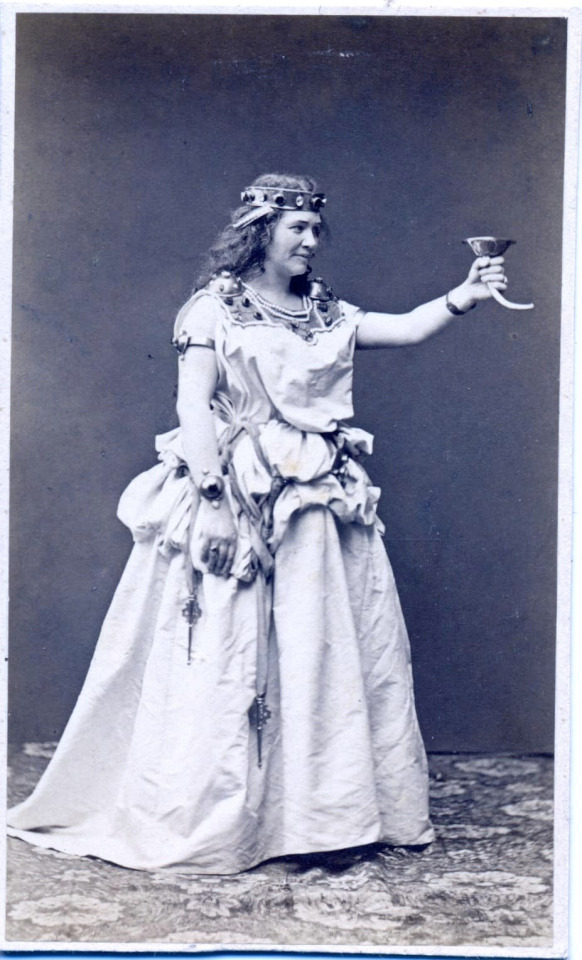
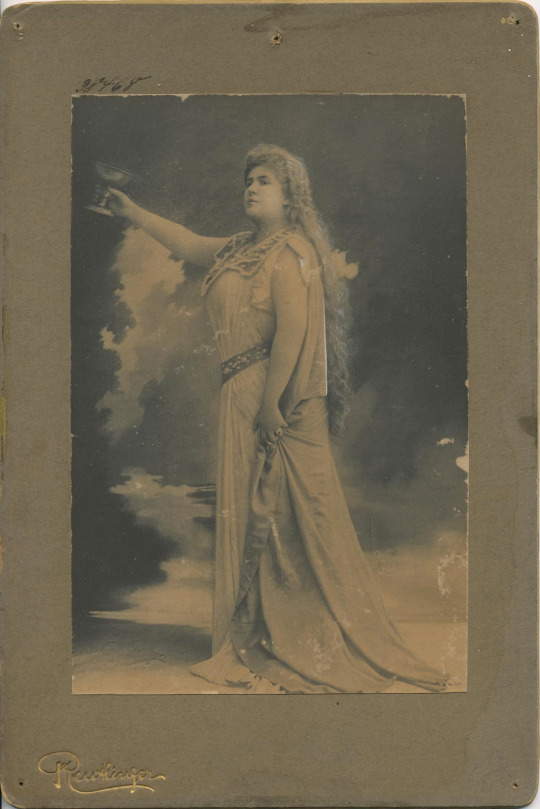


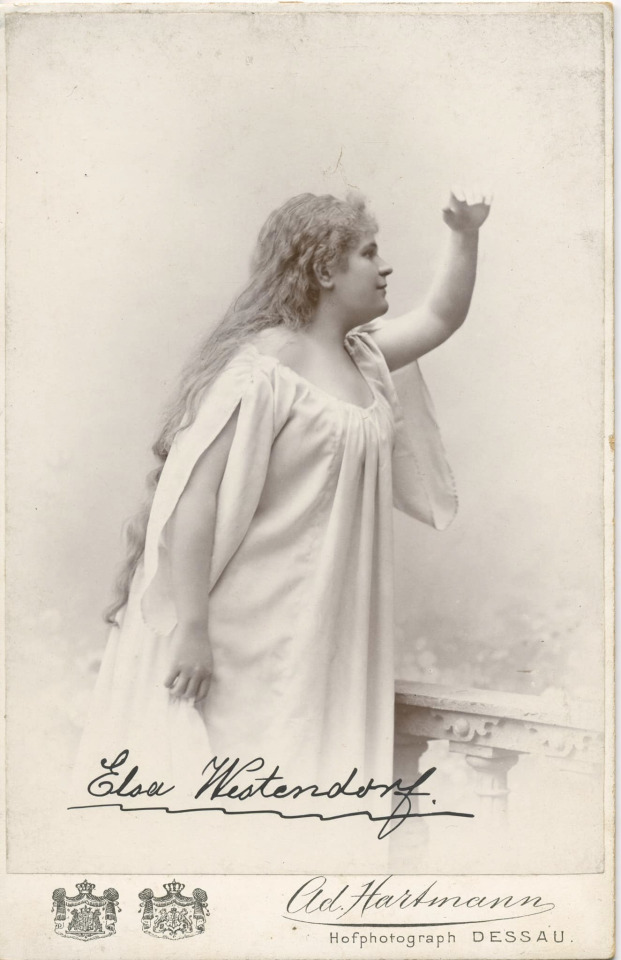



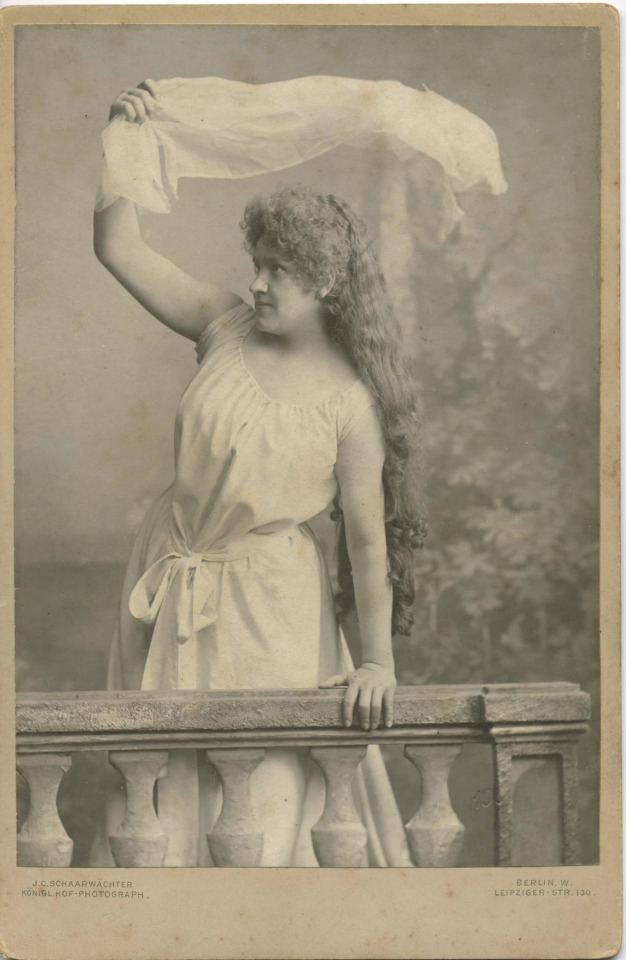
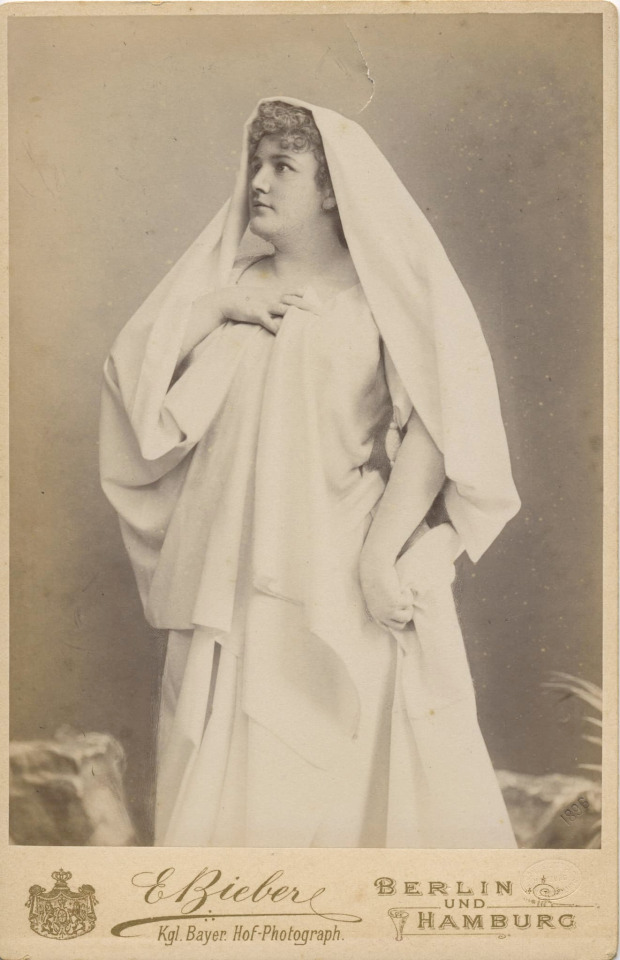

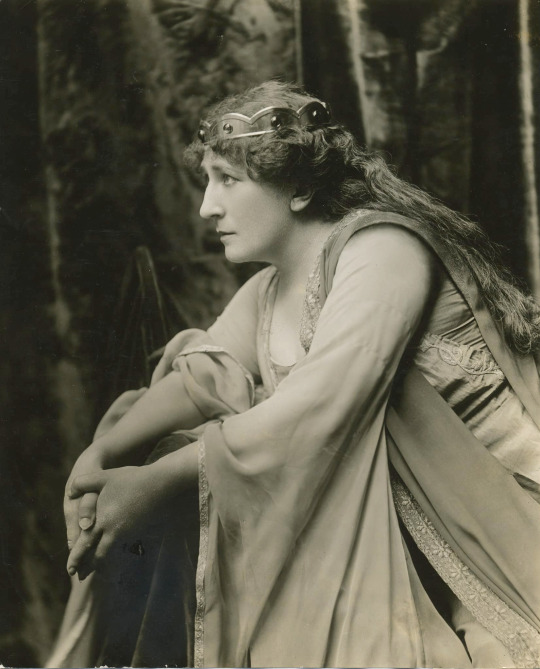
On June 10, 1865, the world premiere of "Tristan and Isolde" by R. Wagner took place in Munich.
„Mild und leise wie er lächelt…“
Here are some of the first sopranos to have sung the role of Isolde over the years and contributed to the success of this work through their dedication.
Malvina Schnoor von Carolsfeld, (7 December 1825 – 8 February 1904), Danish-born Portuguese dramatic soprano.
Felia Litvinne (11 October 1860, Saint Petersburg – 12 October 1936, Paris) was a Russian-born, French-based dramatic soprano.
Italia Vasquez-Molina (1869-1945), Italian soprano.
Irma von Voggenhuber (17 July 1841 Budapest - 11 January 1888 Berlin), soprano.
Elsa Westendorf (1877-1918), German soprano.
Marie Wittich 27 May 1868 – 4 August 1931), German dramatic soprano.
Rosa Sucher (23 February 1849 – 16 April 1927), German dramatic soprano.
Berta Pester-Prosky (Frankfurt am Main, September 7, 1866 - Krefeld, December 27, 1922), German soprano.
Thila Plaichinger (14 March 1868 – 19 March 1939), Austrian soprano.
Katharina Klafsky (19 September 1855 – 22 September 1896), Hungarian dramatic soprano.
Margot Kaftal (1873 Warsaw - October 1942 in Italy), Polish soprano.
Johanna Gadski (15 June 1870/1872 – 22 February 1932), German dramatic soprano.
#opera#classical music#music history#bel canto#composer#classical composer#aria#classical studies#Tristan and Isolde#classical musician#classical musicians#musician#musicians#classical history#historian of music#diva#prima donna#maestro#chest voice#Tristan und Isolde#Richard Wagner#Wagner#soprano#classical singer#classical singing#opera history#history#music
25 notes
·
View notes
Text

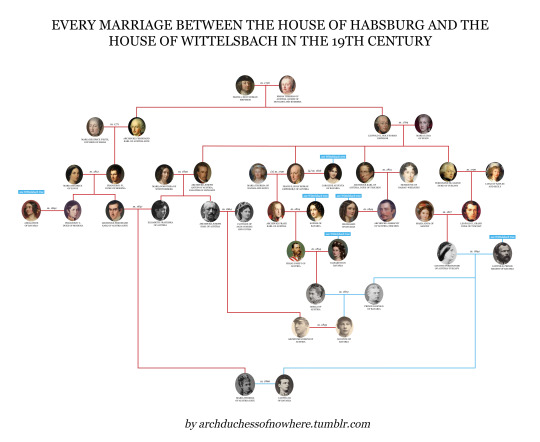
In the 19th century, there were 9 marriages between the House of Wittelsbach and the House of Habsburg:
1816, 29 October. Emperor Franz I of Austria (1768-1835) married Princess Caroline Augusta of Bavaria (1792-1873). They had no children.
1824, 4 November. Archduke Franz Karl of Austria (1802-1878) married Princess Sophie of Bavaria (1805-1872). They had five children, four who survived infancy.
1842, 30 March. Francesco V, Duke of Modena and Archduke of Austria (1819-1875) married Princess Adelgunde of Bavaria (1823-1914). They had one daughter who did not survive infancy.
1844, 16 April. Prince Luitpold of Bavaria, future Prince Regent, (1821-1912) married Archduchess Auguste Ferdinande of Austria-Tuscany (1825-1864). They had four children.
1844, 1 May. Archduke Albrecht of Austria, Duke of Teschen (1817-1895) married Princess Hildegard of Bavaria (1825-1864). They had three children, two who survived infancy.
1854, 24 April. Emperor Franz Josef I of Austria (1830-1916) married Duchess Elisabeth in Bavaria (1837-1898). They had four children, three who survived infancy.
1866, 20 February. Prince Ludwig of Bavaria, future King Ludwig III, (1845-1921) married Archduchess Maria Theresa of Austria-Este (1849-1919). They had thirteen children, eleven who survived infancy.
1873, 20 April. Prince Leopold of Bavaria (1846-1930) married Archduchess Gisela of Austria (1856-1932). They had four children.
1893, 15 November. Archduke Joseph August of Austria (1872-1962) married Princess Auguste of Bavaria (1877-1964). They had six children, four who survived infancy.
#zoom in for better quality!#this was so ridiculously hard to make that it actually took me A YEAR to put it together#because I did it and re-did it several times until it looked sort of decent#I still don't like much how it came out but well. it be like that sometimes#house of habsburg#house of wittelsbach#family tree
37 notes
·
View notes
Note
Has any president had as much time out of office after leaving the white house as Jimmy Carter?
No, it's not even close at this point! Every morning when President Carter wakes up at his home in Plains, Georgia he further extends his records as the longest-living President in American history (98 years and counting) and the POTUS with the longest post-Presidency in American history.
Here are the longest post-Presidencies in American history:
•Jimmy Carter: 41 years, 254 days (as of Oct. 1, 2022)
•Herbert Hoover: 31 years, 231 days [1933-1964]
•Gerald Ford: 29 years, 340 days [1977-2006]
•George H.W. Bush: 25 years, 314 days [1993-2018]
•John Adams: 25 years, 122 days [1801-1826]
•Bill Clinton: 21 years, 254 days (as of Oct. 1, 2022)
•Martin Van Buren: 21 years, 142 days [1841-1862]
•Millard Fillmore: 21 years, 4 days [1853-1874]
To put the longevity of Jimmy Carter's post-Presidency into context, think about this: at the end of Abraham Lincoln's first term in 1865, he was the same age as Carter was when he left office in 1981 -- 56 years old. If Lincoln had retired at the end of his first term and enjoyed the same length of a post-Presidency that Carter has, Lincoln's retirement would have stretched into the second term of Theodore Roosevelt in 1906.
Or how about this one: if John F. Kennedy had served two full terms as President and had a post-Presidency as long as Jimmy Carter's, JFK would have been enjoying retirement during the first term of Barack Obama in 2010. And in 2010, JFK would have been 5 years younger than Jimmy Carter is today!
And since I'm sure someone will probably ask anyway, the shortest post-Presidency (not counting those who died in office or were assassinated, of course) belonged to James K. Polk. Polk barely made it home to Nashville from Washington, D.C. following the end of his term and died just 103 days after leaving the White House in March 1849.
#History#Presidents#Presidential Statistics#Presidential Stats#POTUS Data#Presidential Longevity#Post-Presidency#Jimmy Carter#President Carter#Herbert Hoover#President Hoover#James K. Polk#President Polk
32 notes
·
View notes
Text

THE DESCRIPTION OF SAINT PETER JULIAN EYMARD
The Apostle of the Blessed Sacrament
Feast Day: August 2
"The Eucharist is the supreme proof of the love of Jesus. After this, there is nothing more but heaven itself."
Pierre-Julien Eymard, the founder of the Congregation of the Blessed Sacrament, commonly known as the Sacramentinos, and the women-only Servants of the Blessed Sacrament, was born on February 4, 1811, in La Mure, Grenoble, French Empire. His father was a smith whose second wife was Julian's mother. Since childhood, he developed an intense devotion to the Virgin Mary and for the Eucharist.
Before his First Communion on March 16, 1823, he went on foot to the shrine of Notre-Dame du Laus. Later, he came to know about the apparition of Notre-Dame de La Salette and enjoyed traveling to various Marian shrines throughout France.
After the death of his mother in 1828, despite his father's opposition, he entered the Oblates of Mary Immaculate in June the following year. However, he was dismissed from the formation house because of a serious illness, particularly 'weakness of the lungs' and migraine headaches.
After his father's death in 1831, he succeeded – with the help of his former superior – in gaining admission to the major seminary of the Diocese of Grenoble, where he was ordained on July 20, 1834.
He was assigned as assistant pastor at the town of Chatte, and three years later appointed pastor of Mount Saint-Eynard, whose church and convent were completely dilapidated, and where only a few people were attending the Mass. With the help of his two sisters, Peter began refurnishing the convent and restoring the church.
Although Eymard is known to have revitalized the place, he was dissatisfied with parish work, and decided to join the Marists (the Society of Mary). His two sisters were quite devastated as they had dedicated their lives to serving him.
On August 20, 1837, aware of his religious vocation, he joined the Marist Fathers, where he worked as a well-respected spiritual adviser of seminarians and priests.
In 1849, after meeting in Paris the members of the Association of Nocturnal Adorers, he felt the call to establish a religious congregation completely dedicated to eucharistic adoration.
On May 13, 1856, the Paris bishops consented to Eymard's plans for a 'Society of the Blessed Sacrament'. He left the Marists and founded in Paris the Congregation of the Blessed Sacrament. Two years later, together with Marguerite Guillot, he established the Servants of the Blessed Sacrament, a contemplative congregation for women.
He used to say: 'Religious life is not the end, religious life is only a means;' and also: 'You take communion to become holy, not because you already are.'
Eymard was a friend and contemporary of saints John Marie Vianney, Peter Chanel, Marcellin Champagnat, Blessed Basil Moreau and Pauline-Marie Jaricot.
Peter died on August 1, 1868 in his hometown at the age of 57 due to complications from a brain hemorrhage. He was beatified by Pope Pius XI on July 12, 1925 and canonized by St. John XXIII on December 9, 1962, his major shrine can be found at Santi Claudio e Andrea dei Borgognoni in Via del Pozzetto in Trevi. Peter named by St. John Paul II as the 'Apostle of the Eucharist'.
Peter is the patron of Eucharistic Adoration and Eucharistic Congress.
#random stuff#catholic#catholic saints#peter julian eymard#pierre julien eymard#sacramentinos#congregatio sanctissimi sacramenti#congregation of the blessed sacrament#eucharistic adoration#eucharistic congress
2 notes
·
View notes
Text
Explaining one of VTMB paintings (pt 12)

The Tomb of Washington, Mount Vernon Ink on paper; steel plate engraving, etching (1840) by William Henry Bartlett (artist), John Cousen(engraver) and Virtue & Co. Publishing Company
This print shows the tomb of Founding Father and First U.S. President George Washington( February 22, 1732- December 14, 1799) who died in his bed at his family home at Mount Vernon, Virginia and is the location where he is laid to rest in accordance with his last wishes. Before his death he had made provisions for this new brick tomb to be built for him and his wife, the first First Lady of the United States, Martha Dandridge Custis Washington (June 2, 1731 — May 22, 1802). This was necessary because despite the Washingtons best efforts, their original family vault on the property was rapidly deteriorating beyond repair. [1]
William Henry Bartlett (March 26, 1809 – September 13, 1854) was a British artist known for his steel engravings. Born in Kentish Town, London he became one of the foremost illustrators of topography of his generation and traveled the world including vast parts of Europe, the Middle East and North America. In 1835, Bartlett first visited the United States to draw the buildings, towns and scenery of the northeastern states. The finely detailed steel engravings Bartlett produced were published uncolored with a text by Nathaniel Parker Willis as American Scenery; or Land, Lake, and River: Illustrations of Transatlantic Nature. American Scenery was published by George Virtue in London in 30 monthly installments from 1837 to 1839. Bound editions of the work were published from 1840 onward. Bartlett made sepia wash drawings the exact size to be engraved. His engraved views were widely copied by artists, but no signed oil painting by his hand is known. Engravings based on Bartlett's views were later used in his posthumous History of the United States of North America, continued by Bernard Bolingbroke Woodward and published around 1856.Bartlett's primary concern was to render "lively impressions of actual sights", as he wrote in the preface to The Nile Boat (London, 1849). Many views contain some ruin or element of the past including many scenes of churches, abbeys, cathedrals and castles, and Nathaniel Parker Willis described Bartlett's talent thus: "Bartlett could select his point of view so as to bring prominently into his sketch the castle or the cathedral, which history or antiquity had allowed".[2]
John Cousen (1804–1880) born in Yorkshire England he was a British landscape engraver, painter and print maker who apprenticed under the respected animal engraver John Scott. Cousen's involvement with the Art Journal( which was part of Virtue & Co. Publishing Company) , the leading and most popular fine art publication during the nineteenth century, which he worked almost exclusively for as an engraver and print master. From 1849 to 1866 he supplied thirty-two plates, most after works by his contemporaries. The journal provided surveys of important collections to which Cousen contributed; these included paintings in the Royal Collection and the National Gallery. It was while working for the Art Journal that he produced his only known works after Old Masters, including Hobbema's The Old Mill and Berchem's Crossing the Ford. [3]
Virtue & Co. publishing company was a major book and print publishing firm founded by George Virtue in 1820. The success of Virtue & Co was built off George Virtue choice in selecting only the most accomplished artists such as William Henry Bartlett, and employing the best engravers such as John Cousen, to produced books that were rarely surpassed in elegance and correctness for the period. Virtue created a prodigious business, issuing upwards of twenty thousand copper and steel engravings through his career.[4] In 1848 the company acquired 'The Art Union' which became 'The Art Journal' (1839-1912; for a run of impressions in series order from this journal for 1844 to 1870. In 1855 George’s son, James Sprent Virtue, took over his father's business which he had been working at in the New York branch since 1848 and initiated the series of prints after great 'galleries' of pictures including the Royal Collection, Vernon Collection(which this print is a part of) and the Turner Collection. [5]
Citations:
[1]“Tombs.” George Washington's Mount Vernon, Mount Vernon Ladies’ Association, https://www.mountvernon.org/the-estate-gardens/the-tombs/.
[2]“William Henry Bartlett .” Wikipedia, Wikimedia Foundation, 11 Mar. 2023, https://en.wikipedia.org/wiki/William_Henry_Bartlett.
[3] “Collections Online: British Museum.” Collections Online | British Museum, British Museum, https://www.britishmuseum.org/collection/term/BIOG23833.
[4] “George Virtue .” Wikipedia, Wikimedia Foundation, 15 Feb. 2022, https://en.wikipedia.org/wiki/George_Virtue.
[5]“William Henry Bartlett .” Wikipedia, Wikimedia Foundation, 11 Mar. 2023, https://en.wikipedia.org/wiki/William_Henry_Bartlett.
#Explaining one of VTMB paintings#vtm bloodlines#Vampire The Masquerade Bloodlines#john cousen#Virtue & Co#william henry bartlett#print engraving#vtmb
4 notes
·
View notes
Photo
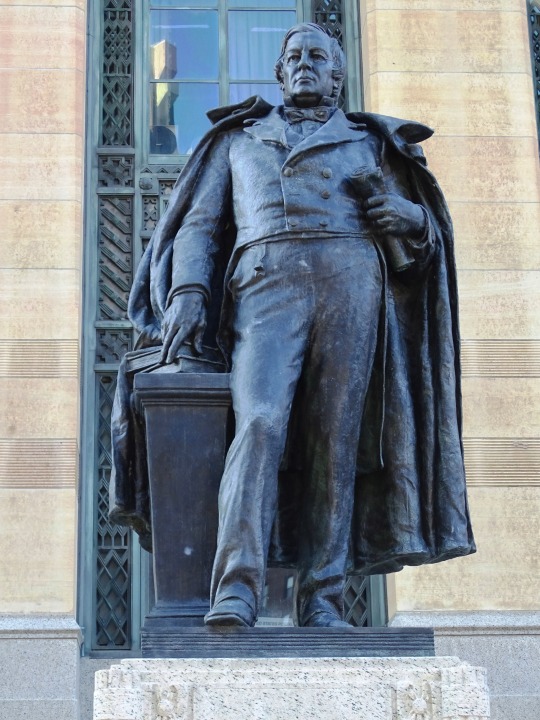
Millard Fillmore took office as vice president on 4 March, 1849.
#President Millard Fillmore by Bryant Baker#inaugurated#USA#Millard Fillmore#vice president#4 March 1849#anniversary#US history#Buffalo#New York#summer 2018#sculpture#cityscape#city hall#architecture#original photography#tourist attraction#landmark
1 note
·
View note
Text
Events 3.4 (before 1900)
AD 51 – Nero, later to become Roman emperor, is given the title princeps iuventutis (head of the youth).
306 – Martyrdom of Saint Adrian of Nicomedia.
581 – Yang Jian declares himself Emperor Wen of Sui, ending the Northern Zhou and beginning the Sui dynasty.
852 – Croatian Knez Trpimir I issues a statute, a document with the first known written mention of the Croats name in Croatian sources.
938 – Translation of the relics of martyr Wenceslaus I, Duke of Bohemia, Prince of the Czechs.
1152 – Frederick I Barbarossa is elected King of Germany.
1238 – The Battle of the Sit River begins two centuries of Mongol horde domination of Russia.
1351 – Ramathibodi becomes King of Siam.
1386 – Władysław II Jagiełło (Jogaila) is crowned King of Poland.
1461 – Wars of the Roses in England: Lancastrian King Henry VI is deposed by his House of York cousin, who then becomes King Edward IV.
1493 – Explorer Christopher Columbus arrives back in Lisbon, Portugal, aboard his ship Niña from his voyage to what are now The Bahamas and other islands in the Caribbean.
1519 – Hernán Cortés arrives in Mexico in search of the Aztec civilization and its wealth.
1628 – The Massachusetts Bay Colony is granted a Royal charter.
1665 – English King Charles II declares war on the Netherlands marking the start of the Second Anglo-Dutch War.
1675 – John Flamsteed is appointed the first Astronomer Royal of England.
1681 – Charles II grants a land charter to William Penn for the area that will later become Pennsylvania.
1769 – Mozart departed Italy after the last of his three tours there.
1776 – American Revolutionary War: The Continental Army fortifies Dorchester Heights with cannon, leading the British troops to abandon the Siege of Boston.
1789 – In New York City, the first Congress of the United States meets, putting the United States Constitution into effect.
1790 – France is divided into 83 départements, cutting across the former provinces in an attempt to dislodge regional loyalties based on ownership of land by the nobility.
1791 – Vermont is admitted to the United States as the fourteenth state.
1794 – The 11th Amendment to the U.S. Constitution is passed by the U.S. Congress.
1797 – John Adams is inaugurated as the 2nd President of the United States of America, becoming the first President to begin his presidency on March 4.
1804 – Castle Hill Rebellion: Irish convicts rebel against British colonial authority in the Colony of New South Wales.
1813 – Cyril VI of Constantinople is elected Ecumenical Patriarch of Constantinople.
1814 – War of 1812: Americans defeat British forces at the Battle of Longwoods between London, Ontario and Thamesville, near present-day Wardsville, Ontario.
1837 – The city of Chicago is incorporated.
1848 – Carlo Alberto di Savoia signs the Statuto Albertino that will later represent the first constitution of the Regno d'Italia.
1849 – President-elect of the United States Zachary Taylor and Vice President-elect Millard Fillmore did not take their respective oaths of office (they did so the following day), leading to the erroneous theory that outgoing President pro tempore of the United States Senate David Rice Atchison had assumed the role of acting president for one day.
1861 – The first national flag of the Confederate States of America (the "Stars and Bars") is adopted.
1865 – The third and final national flag of the Confederate States of America is adopted by the Confederate Congress.
1865 – U.S. politician Andrew Johnson made his drunk vice-presidential inaugural address in Washington, D.C.
1878 – Pope Leo XIII reestablishes the Catholic Church in Scotland, recreating sees and naming bishops for the first time since 1603.
1882 – Britain's first electric trams run in east London.
1890 – The longest bridge in Great Britain, the Forth Bridge in Scotland, measuring 8,094 feet (2,467 m) long, is opened by the Duke of Rothesay, later King Edward VII.
1899 – Cyclone Mahina sweeps in north of Cooktown, Queensland, with a 12 metres (39 ft) wave that reaches up to 5 kilometres (3.1 mi) inland, killing over 300.
0 notes
Text

Ellen Sharples, Sarah Lloyd Hillhouse, n.d., pastel on paper, sheet: 9 1⁄8 x 7 1⁄8 in. (23.1 x 18.1 cm), Smithsonian American Art Museum, Gift of Mrs. John Mason Frier, 1970.356
#bornonthisday Ellen Wallace Sharples (4 March 1769 – 14 March 1849) was an English painter specialized in portraits in pastel and in watercolor miniatures on ivory.[1] She exhibited five miniatures at the Royal Academy in 1807, and founded the Bristol Fine Arts Academy in 1844 with a substantial gift. Via Wikipedia
#EllenSharples #SarahLloydHillhouse #artherstory #artbywomen #womensart #palianshow #art #womenartists #femaleartist #artist
0 notes
Text
With compliments from, The Directorate General Public Relations,
Government of the Punjab, Lahore Ph. 99201390.
No.298/AbdulAli/Umer
HANDOUT (A)
SECRETARY INDUSTRY AND COMMERCE OUTLINES KEY DETAILS ABOUT PUNJAB'S RAMADAN PACKAGE
LAHORE, March 4:
Secretary Industry and Commerce Ehsan Bhutta visited the central Ramadan control room established at Poonch House and briefed the media representatives on its operations.
Speaking at the event, Secretary Ehsan Bhutta stated that as part of the Ramadan package, essential food items will be delivered to 6.4 million deserving families at their doorsteps. Following the chief minister's directives, this initiative will be completed within the next 15 days. The food hamper will include five items, such as flour, sugar, and ghee. He highlighted that people will have access to quality items at affordable prices in Ramadan and model bazaars. Additionally, districts with model bazaars will not have Ramadan bazaars. Agricultural fair price shops will also be established during Ramadan in model markets. A central control room has been established at Poonch House to oversee the Ramadan package. Officers and officials from six departments will work in two shifts at this control room, which will operate from 9 am to 10 pm. The control room's monitoring will be conducted through online cameras.
Secretary Ehsan Bhatta further mentioned that the prices of essential commodities will be monitored using the "Punjab Price App." The Punjab Food Authority will ensure the quality of essential items, while the Urban Unit will make third-party assessment of Ramadan package. Efforts are underway to enhance the price control mechanism. He added that during the last three days, 250 samples of items were collected, out of which 7 failed quality tests. Action is being taken against mills supplying substandard ghee. Secretary Ehsan Bhutta also shared the historical significance of Poonch House, which was built in 1849. DG Industries Asif Ali Farrukh and other relevant officers were also present at the event.
*****
0 notes
Text

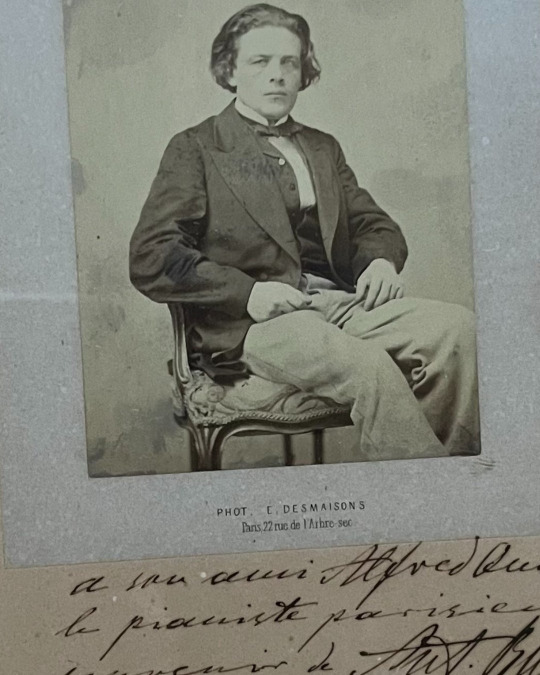
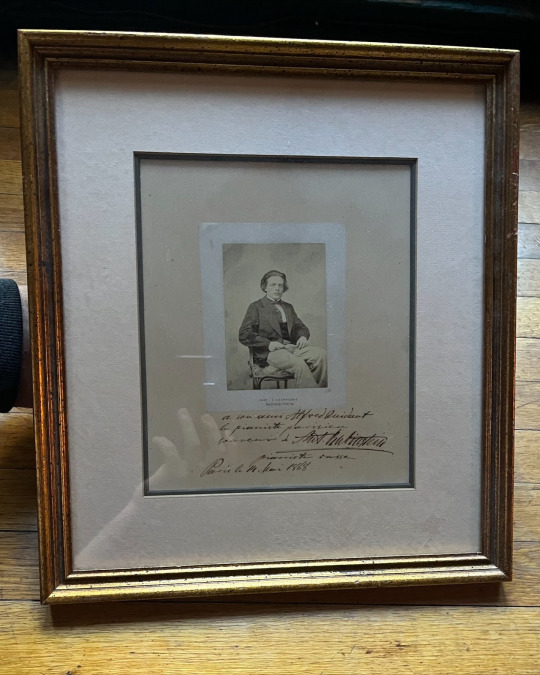
OTD in Music History: Legendary Russian pianist, composer, and pedagogue Anton Rubinstein (1829 - 1894) meets Frederic Chopin (1810 - 1849) and Franz Liszt (1811 - 1886) for the first time, in 1841, following a concert in Paris.
As Rubinstein recounted nearly half a century later in his "Autobiography" (1890):
“For a whole year I remained in Paris, but I had no lessons, except in music with Alexander Villoing [(1804 - 1878), who was a student of John Field (1782 - 1837), the inventor of the "nocturne"]… I gave several concerts, generally in the piano rooms of some famous factory... At one of these concerts, Liszt, Chopin, and other musical celebrities were present… It was then that I also played with the Belgian violinist [Henri] Vieuxtemps [(1820 - 1881)]…"
The January 10, 1841 issue of “Le Ménestrel” confirms Rubinstein's arrival in Paris (p. 4):
“There is much talk now of a young Russian pianist, M. Rubinstein, who has just arrived in Paris with his teacher…"
And the fateful meeting itself was recorded in the March 28 edition of “La France Musicale” (p. 106):
“A very young pianist—a ten years old boy—M. Rubinstein, convened this week in the halls of M. Pleyel quite a number of fans and artists. This wonder pianist performs the most difficult music with ease, agility, and a feeling that he could serve as an example to many pianists who have passed the age of majority. M. Cramer, M. Kalkbrenner, M. Liszt, M. Chopin, M. Wolff, and M. Leopold Mayer… applauded from time to time together with the audience…"
Rubinstein would go on to become one of the most important Russian musicians in history, founding the St. Petersburg Conservatory and teaching (among many others) fellow legendary pianist Josef Hofmann (1876 - 1957).
PICTURED: A very early photograph of Rubinstein, which he signed and dated in May 1868 and inscribed to a friend during a later trip to Paris (the day after he conducted the premiere of Camille Saint-Saens’s [1835 - 1921] 2nd Piano Concerto, with the composer playing the piano).
#Anton Rubinstein#Rubinstein#opera#classical music#music history#bel canto#composer#aria#classical composer#pianist#classical pianist#conductor#The Demon#Conducting#Teacher#music Teacher#pedagogue#St. Petersburg Conservatory#Symphony#Piano concerto#concerto#concert#chest voice#maestro#bel cnato#classical musicians#classical musician#Paris Conservatoire
3 notes
·
View notes
Text
History
November 24
November 24, 1859 - Charles Darwin's book On the Origin of Species by Means of Natural Selection was first published, theorizing that all the living creatures descended from a common ancestor.
November 24, 1863 - The Battle of Chattanooga took place during the American Civil War as General Ulysses Grant's soldiers scaled heavily fortified Lookout Mountain and overran Confederate General Braxton Bragg's army.
November 24, 1874 - Joseph Glidden patented his invention of barbed wire.
November 24, 1969 - The U.S. Army announced that Lt. William L. Calley had been charged with premeditated murder in the massacre of civilians in the Vietnamese village of My Lai in March of 1968. Calley was ordered to stand trial by court martial and was later convicted and sentenced to life in prison. However, his sentence was later commuted to three years of house arrest by President Richard Nixon.
November 24, 1989 - In Czechoslovakia, mass demonstrations resulted in the resignation of the entire presidium and secretariat of the Czechoslovak Communist Party.
November 24, 1992 - The U.S. military departed the Philippines after nearly a century of military presence. In 1991, the Philippine Senate had voted to reject a renewal of the lease for the American military base.
November 24, 1998 - Britain's Queen Elizabeth II opened a new session of Parliament by announcing a bill to do away with the centuries-old right of aristocrats to sit in the House of Lords, thereby taking membership and voting rights away from 759 Dukes, Earls and other hereditary nobles with titles dating as far back as the Middle Ages.
Birthday - Zachary Taylor (1784-1850) the 12th U.S. President was born in Orange County, Virginia. Nicknamed "old rough and ready," he won the presidency as a result of his heroics in the Mexican War of 1846-48. He served as President from March 4, 1849 to July 9, 1850, when he died in the White House after becoming ill.
Birthday - American composer Scott Joplin (1868-1917) was born in Texarkana, Texas. Best known for his piano rags including Maple Leaf Rag and The Entertainer.
Birthday - German Field Marshal Erich von Manstein (1887-1973) was born in Berlin. His plan for the German invasion of France in 1940 involved staging a surprise attack through the Ardennes Forest, and was a stunning success. He went on to achieve several important victories over the Russians in the East, but was dismissed by Hitler in 1944 following a series of arguments over military strategy.
Birthday - Motivational lecturer Dale Carnegie (1888-1955) was born in Maryville, Missouri. Best known for his 1936 book How to Win Friends and Influence People which sold millions of copies and was translated into 29 languages.
0 notes